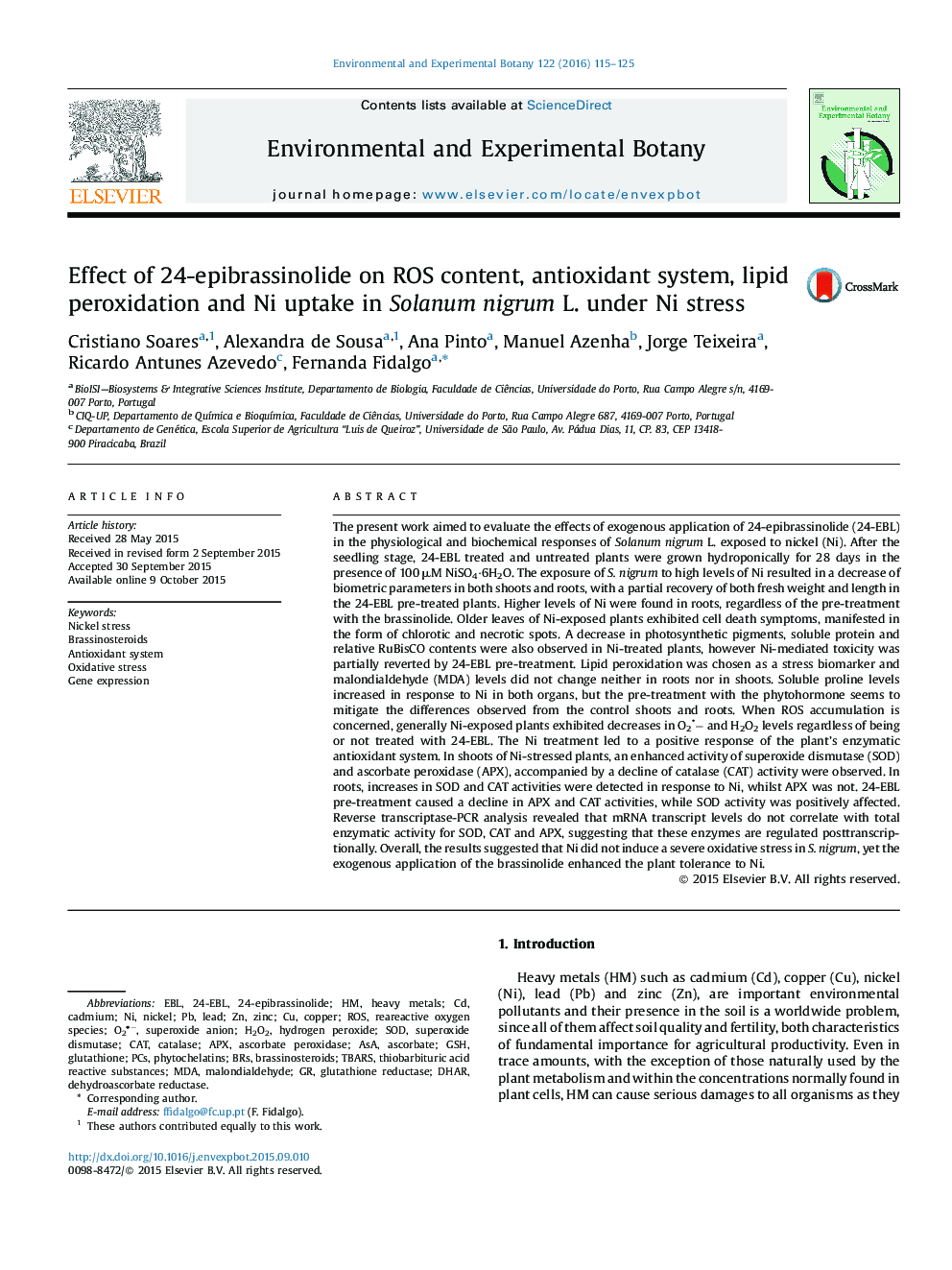| کد مقاله | کد نشریه | سال انتشار | مقاله انگلیسی | نسخه تمام متن |
|---|---|---|---|---|
| 4554170 | 1628055 | 2016 | 11 صفحه PDF | دانلود رایگان |

• Solanumnigrum plants accumulated higher concentrations of Ni in the roots.
• S. nigrum responded to Ni by increasing the antioxidant enzyme system and proline accumulation.
• Ni exposure of S. nigrum does not result in a severe oxidative stress condition.
• 24-EBL mitigates Ni toxicity by promoting Ni translocation to shoots.
• SOD, CAT and APX are regulated post-transcriptionally upon Ni exposure.
The present work aimed to evaluate the effects of exogenous application of 24-epibrassinolide (24-EBL) in the physiological and biochemical responses of Solanum nigrum L. exposed to nickel (Ni). After the seedling stage, 24-EBL treated and untreated plants were grown hydroponically for 28 days in the presence of 100 μM NiSO4·6H2O. The exposure of S. nigrum to high levels of Ni resulted in a decrease of biometric parameters in both shoots and roots, with a partial recovery of both fresh weight and length in the 24-EBL pre-treated plants. Higher levels of Ni were found in roots, regardless of the pre-treatment with the brassinolide. Older leaves of Ni-exposed plants exhibited cell death symptoms, manifested in the form of chlorotic and necrotic spots. A decrease in photosynthetic pigments, soluble protein and relative RuBisCO contents were also observed in Ni-treated plants, however Ni-mediated toxicity was partially reverted by 24-EBL pre-treatment. Lipid peroxidation was chosen as a stress biomarker and malondialdehyde (MDA) levels did not change neither in roots nor in shoots. Soluble proline levels increased in response to Ni in both organs, but the pre-treatment with the phytohormone seems to mitigate the differences observed from the control shoots and roots. When ROS accumulation is concerned, generally Ni-exposed plants exhibited decreases in O2− and H2O2 levels regardless of being or not treated with 24-EBL. The Ni treatment led to a positive response of the plant’s enzymatic antioxidant system. In shoots of Ni-stressed plants, an enhanced activity of superoxide dismutase (SOD) and ascorbate peroxidase (APX), accompanied by a decline of catalase (CAT) activity were observed. In roots, increases in SOD and CAT activities were detected in response to Ni, whilst APX was not. 24-EBL pre-treatment caused a decline in APX and CAT activities, while SOD activity was positively affected. Reverse transcriptase-PCR analysis revealed that mRNA transcript levels do not correlate with total enzymatic activity for SOD, CAT and APX, suggesting that these enzymes are regulated posttranscriptionally. Overall, the results suggested that Ni did not induce a severe oxidative stress in S. nigrum, yet the exogenous application of the brassinolide enhanced the plant tolerance to Ni.
Journal: Environmental and Experimental Botany - Volume 122, February 2016, Pages 115–125